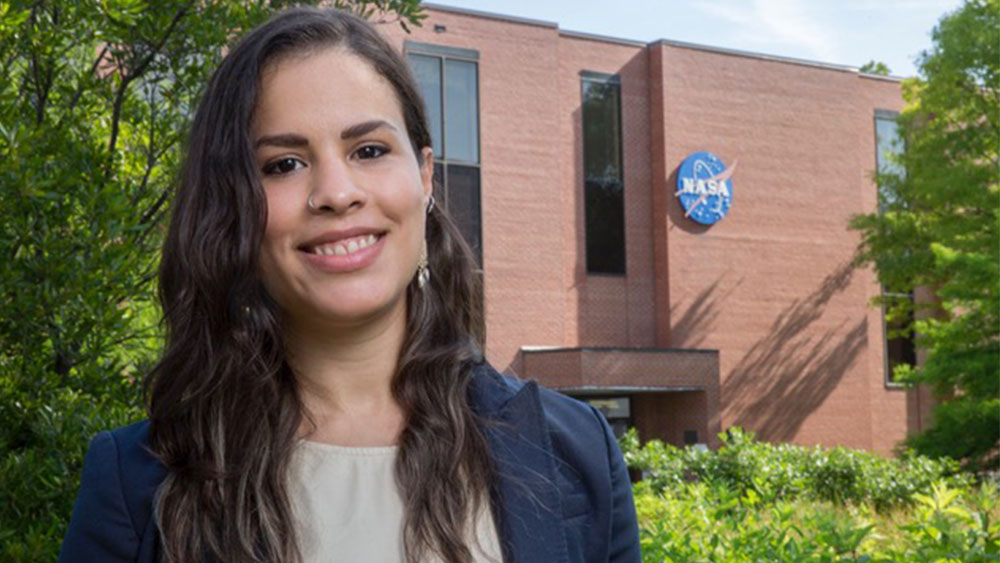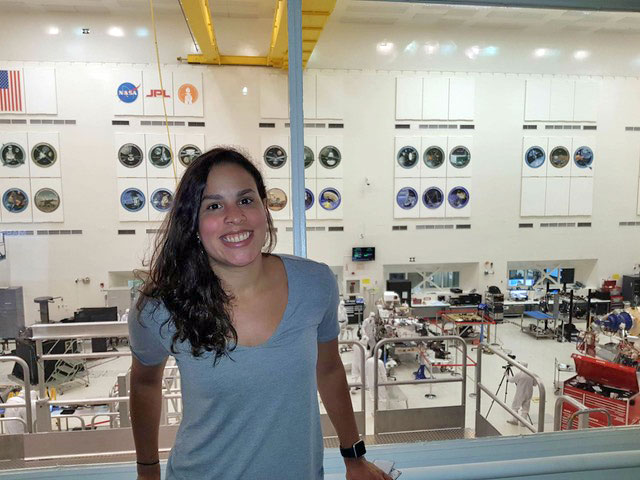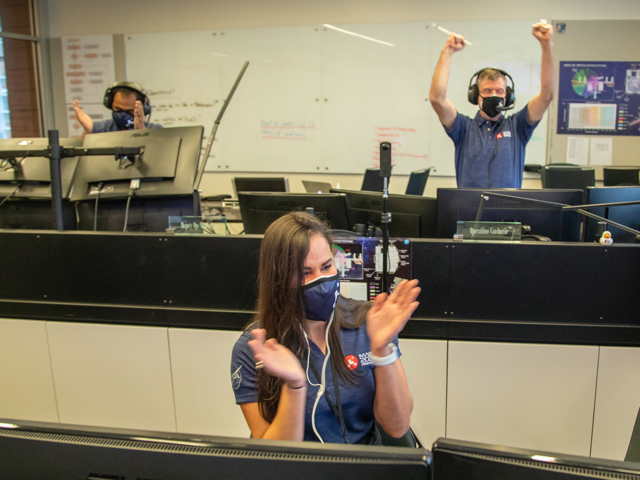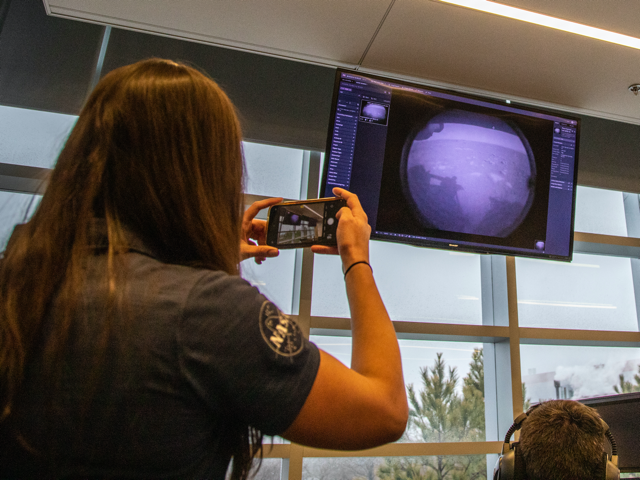
Samalis Santini De León, a doctoral student in the Department of Aerospace Engineering at Texas A&M University, joined space exploration history when NASA's Mars 2020 Perseverance rover successfully landed on the cold planet on Feb. 18, 2021.
Santini De León is a NASA Science and Technology Research Fellow and has spent the last year running countless week-long entry, descent and landing (EDL) simulations to identify patterns and risks and assess the system's performance in preparation for landing day.
Making her way to Mars
Santini De León has been working off and on as part of the EDL team for the last four years but has been involved in NASA programs since her first year of undergrad at the University of Puerto Rico.
Her freshman year, she joined NASA's RockSat program, which involved constructing experimental payloads launched by sounding rockets. Finding she had a fascination with space, Santini De León continued with the program throughout her undergrad, applied for NASA's space grant project and completed internships at NASA Ames Research Center and MITRE Corporation.
"All of that made me realize I wanted to do research,” said Santini De León. “I wanted something bigger to work on and for a longer time. With research, I felt like I could really get something out of it, the opportunity to learn so much more and work on something I could call my own in a way."

The research she began at Cornell University and continued at Texas A&M led to her fellowship with NASA. Her work focuses on using machine learning and cognitive assistance when analyzing EDL simulations to help experts uncover vital information more quickly and with less human error, ultimately reducing uncertainty and assuring a more accurate landing.
"These simulations produce over 15,000 variables and thousands of trajectories,” explained Santini De León. "Having to do that manually is really complicated, and then finding flaws or patterns is really difficult."
With Mars 2020, she's had the opportunity to apply this approach to big datasets on a real mission. The fellowship gave her the experience to learn from and contribute to a project that is improving landing accuracy for future expeditions, including landing humans on Mars.
Tango Delta Nominal
On Perseverance’s landing day, Santini De León was at the NASA Langley Research Center with part of her team, surrounded by monitors showing incoming data and anxiously waiting to see the outcome of their work.
"Leading up to entry, I did not feel like any of what was happening was real," she said. "Things were happening so fast. Hearing the EDL callouts and successful events was calming, but only for some seconds until the next events happened.”
The critical minutes of the mission, when no one speaks, hearts race and everyone in the room holds their breath, is referred to as the "seven minutes of terror." During those critical few minutes, the rover traveling at 12,500 miles per hour enters the planet's atmosphere, and its external heat shield reaches about 2,370 degrees Fahrenheit. As it descends, a parachute deploys and navigation technology identifies a safe area on the terrain. Slowly and gracefully, the rover must touch down on a small, targeted landing zone. The process is nerve-racking because communication from the rover takes more than 11 minutes to reach teams on Earth, which means Perseverance has to navigate the seven-minute process all on its own.

When Santini De León’s supervisor called out Tango Delta Nominal, the phonetic identifiers at NASA for "touchdown," she breathed a sigh of relief.
“The teamwork and collaboration between the EDL team and the other teams was astounding,” she said. “Allen Chen did an amazing job leading our team, and I have felt extremely fortunate that my NASA mentor, David Way, got me involved in such a big project. He placed a lot of trust in me, and that means a lot.”
Perseverance
Santini De León is proud of the part she played in successfully landing Perseverance and gives credit to the support of her parents and teachers who helped her along the way. Since the landing, she’s enjoyed hearing the excitement from kids and is eager to get involved in more STEM (science, technology, engineering and math) outreach.

“I am full of joy to have had the chance to represent Puerto Rico in such a big milestone in space exploration,” she said. “I hope I was an inspiration to someone and it helps them believe in themselves. It’s not always going to be easy, but passion and perseverance can take you to places you never imagined. Being a woman and being from a Latin country, I want other young girls and Hispanic/Latinx to know that they can also do great things."